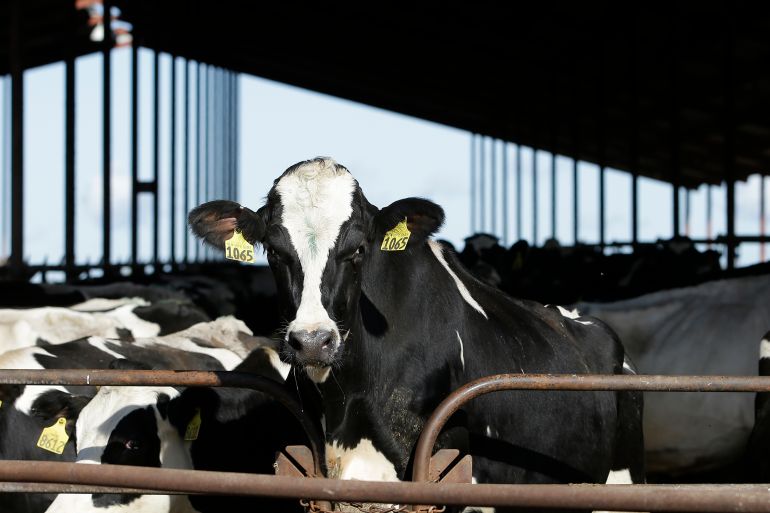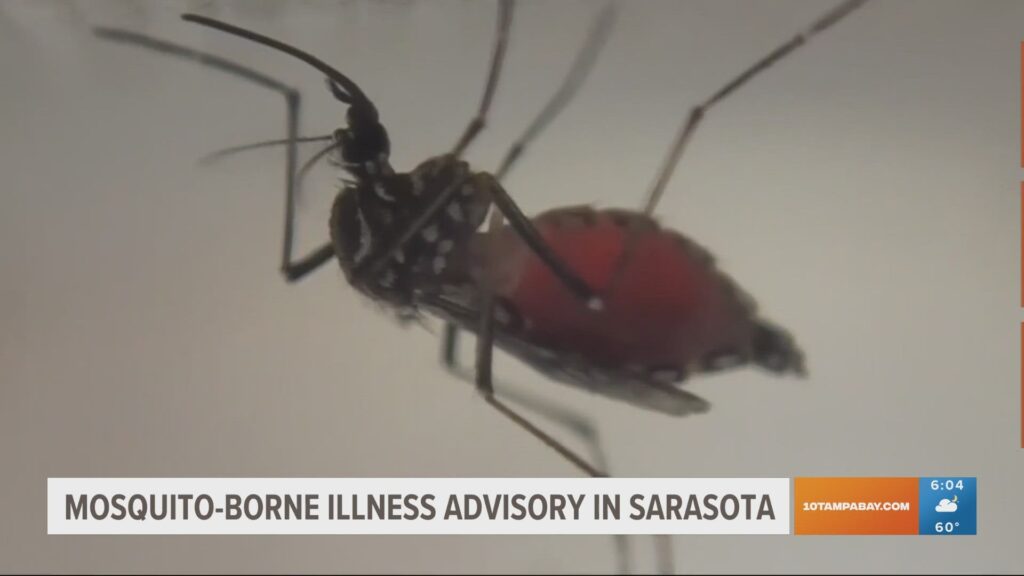The bird flu virus, which was first reported in US poultry farms in 14 states in early 2022, has spread to cows and two humans in the first-ever cases of bird flu in humans in the United States. The same subtype of bird flu is also spreading in other countries, in what experts are calling a “global pandemic for animals”.
US public health officials have been monitoring dairy cow herds, as well as beef and milk products around the country since the first outbreak in cows was reported in March. So far, the US is the only country to have reported bird flu in cattle, but there are fears that it could pose a serious threat to humans, too.
In April, a Texas farm worker contracted the virus in what is believed to be the first-ever transmission of the virus from a mammal – in this case, cattle – to a human. Thankfully, he suffered only mild conjunctivitis – an infection in the eye – and has since made a full recovery. The US’s first-ever bird flu case in a human was reported in 2022 when a poultry farm worker in Colorado was exposed to infected chicken. He reported only fatigue as the main symptom.
However, bird flu can be extremely dangerous for humans. Since the virus – also known as Avian Influenza – was first detected nearly three decades ago in China, some 860 people have been infected by birds in 23 countries, including China, Egypt, Vietnam and Turkey, according to the World Health Organization (WHO). Of those, 463 people died from the virus, giving a huge 52 percent death rate.
So far, the Centres for Disease Control and Prevention (CDC) has detected the virus in more than 200 cows, 9,000 wild birds and some 90 million chickens across the US.
On Friday last week, Canada began implementing stricter import checks for US cattle, following similar measures in Colombia.
So how is bird flu spreading, and could it become a more serious threat to humans?
What is bird flu?
Bird flu is a viral infection that primarily affects birds. Some strains of bird flu can, however, also be infectious to other animals, including humans.
Bird flu belongs to the Influenza A group, one of four types of influenza, and the only one known to cause flu pandemics.
There are also subtypes of avian influenza. Three of these – H5N1, H5N6 and H7N9 – have been found to cause illness in humans as well. While the letters in the names of these subtypes refer to a combination of proteins found in bird flu, the numbers indicate the subtype.
The first and best-known subtype of bird flu is H5N1, which was first identified in domestic geese in the Guangdong province of southern China in 1996. This is the subtype of bird flu which is currently affecting birds and cattle in the US.
In birds, the virus is likely to cause severe disease and death. Cows, particularly older ones, have displayed symptoms such as reduced appetite and lactation when infected.
“This particular strain of the H5N1 virus has been causing a global pandemic for animals – the term is an epizootic disease – and it has affected a lot of domestic poultry production,” said Meghan Davis, associate professor at the Johns Hopkins Bloomberg School of Public Health and trained dairy veterinarian.
How widespread is bird flu among cattle in the US?
Since late March, H5N1 has been reported in around 200 animals in 36 dairy cattle herds in the US states of Colorado, South Dakota, Kansas, Michigan, North Carolina, Idaho, Texas, Ohio and New Mexico.
Some experts suspect that the outbreak may have begun to spread to cows before March – even as early as late 2023 – but was not reported.
“What we don’t know is just how widespread this might be”, said Davis. “This is something where we need lots of surveillance, lots of eyes on this, lots of different ways of looking at the challenge.”
Could bird flu spread to cattle in other countries?
Although there have been no confirmed cases of bird flu in cows beyond US borders so far, the World Health Organization (WHO) has warned that there is a risk of it spreading internationally through the movement of migratory birds.
“With the virus carried around the world by migratory birds, certainly there is a risk for cows in other countries to be getting infected,” said Wenqing Zhang, head of WHO’s Global Influenza Programme, at a news briefing in Geneva in late April.
How dangerous is bird flu for humans?
H5N1 is described by the CDC as “highly pathogenic”, meaning it is “strongly able to cause disease”, in birds. But it has also proved to be deadly to humans in past cases. Only 860 people around the world have contracted the virus since it was first discovered in 1996, but more than half of those have died from it, according to the WHO.
How do we treat bird flu in humans?
There is no vaccine for bird flu in humans. Infected people are typically prescribed antiviral medication such as oseltamivir or zanamivir to manage the symptoms. Health authorities including the CDC recommend administering such drugs as soon as symptoms begin.
How do farmers deal with outbreaks of a virus?
In most parts of the world, farmers cull animals which have been exposed to an outbreak of a deadly virus such as bird flu. Early in April, for example, a poultry farm in Texas destroyed 1.5 million chickens to curtail the spread of bird flu.
So far, there have been no reports of cattle being culled. This is because bird flu has so far not been as deadly in cows as it has in chickens and turkeys, said Andrew Stevens, assistant professor of agricultural and applied economics at the University of Wisconsin-Madison.
How is bird flu transmitted to farm animals and humans?
Bird flu can be spread by wild birds and waterfowl such as ducks and geese through their droppings or secretions such as saliva.
When poultry or other animals scavenge environments which have been contaminated or have come into contact with infected birds, they can catch the virus too. Infected wild birds may also be present on farms and come into contact with water or feed that cows consume, although researchers are still studying such potential modes of transmission, said Davis.
In cattle, it is still not fully understood how the virus passes from one cow to another, but traces of the virus in milk suggest a heavy viral load can often be found in the mammary glands. Higher viral load in milk compared with respiratory tracts of cows may also point to the routes of exposure of the virus.
Scientists suspect, therefore, that the virus spreads when cows are milked, as equipment may become infected or the virus may become aerosolised – suspended in the air – during cleaning.
How are other countries reacting to the US bird flu crisis?
In late April, Colombia became the first country to limit trade with the US because of bird flu in cows. It has restricted imports of beef and beef products from states where cows have tested positive for the virus.
Mexico, a major market for US beef and dairy products, has also increased surveillance of cattle entering the country for any sign of respiratory distress, the agriculture ministry said.
On Friday last week, the Canadian Food Inspection Agency also tightened import controls relating to US cattle, introducing a requirement for exporters to provide negative bird flu test results for lactating dairy cattle as well as mandatory testing of retail milk to check for traces of the virus.
Stevens said such measures are important for the long-term sustainability of supply chains. “Although increasing import checks of cattle and dairy products from the US may slightly increase the relative costs of US exports, these costs are small relative to the potential impacts of an import ban or moratorium.”







